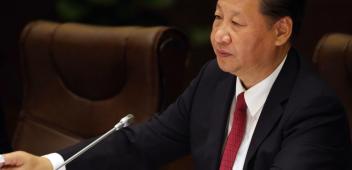China no rival in the battle for island influence
In an opinion piece in The Australian, Jenny Hayward-Jones writes that instead of speculating on the hidden intentions of China’s growing engagement with the Pacific Islands region, Canberra's priority should be to assist Pacific Island countries maximise the economic benefits of China's new role.

Executive Summary
China no rival in the battle for island influence
Jenny Hayward-Jones
The Australian
17 May 2013
P. 7
China’s growing engagement in the Pacific Islands in the past few years has fuelled talk of a new great power competition in the region. Australia's defence white paper, while generally positive about the rise of China, has added to this discourse by cautioning that Australia's contributions to our region may be balanced in the future by the growing influence of Asian nations and by failing to put the China threat narrative to rest.
As was the case in the 2009 white paper, Defence is still concerned about a major power with hostile intentions establishing bases in our immediate neighbourhood from which it could project force against us.
Viewing China as a geo-strategic competitor is misguided and potentially counterproductive. It risks obscuring a better understanding of the benefits and drawbacks of China's economic activities in the region.
As I argue in a new Lowy Institute analysis, Big Enough for All of Us: Geo-strategic Competition in the Pacific Islands, conjecture about China's ambitions should be moderated by a sober assessment of what China is doing in the Pacific Islands. A review of the three main elements of China's engagement -- trade and investment, aid, and diplomatic and military ties -- provides a weak case for the argument that China is challenging Australia's dominance in the region.
China is the region's second-largest bilateral trading partner. This sounds impressive but the value of its two-way trade, at $US2 billion ($2.02bn) is only about one-third of the value of Australia's trade with the region. Chinese commercial interests in the Pacific Islands have expanded, particularly in resource-rich Papua New Guinea. But it is competing in, not dominating, an increasingly crowded business environment, which includes investors from Australia, New Zealand, the US, France, Malaysia, Thailand, South Korea, The Philippines and Japan. Australian investment in Papua New Guinea alone is worth more than $16bn, almost as much as Australia's investment in China.
The opaque nature of much of China's aid to the Pacific Islands, which it describes as ``South-South co-operation'' -- and which is welcomed by Pacific Island governments as filling a gap left by Western donors -- has fuelled suspicions about Beijing's real intent in the region. Australia has encouraged Beijing to be more transparent about its aid activities and cautioned Pacific Island countries about taking on Chinese loans they cannot repay.
New research has revealed details about the quantum of China's development assistance to the region from 2006 to 2011, a more accurate measure of China's contribution than the annual allocations reported by traditional donors. A comparison of donor disbursements to the Pacific Islands shows Australia as the lead donor by far, disbursing $US4.8bn over five years, and China a distant fifth (after the US, New Zealand and Japan), spending about $US850 million.
Australia's net aid spending in the Pacific Islands constitutes 62 per cent of total aid received by the region, a market dominance unsurpassed by any other donor in any other region. This is highly unlikely to be challenged by China, which spends just 4 per cent of its global aid in the Pacific Islands, compared with the 23 per cent Australia devotes to the region from its global aid program.
It is true that China has invested in its diplomatic network in the Pacific and wined and dined Pacific leaders. But there is no evidence that China's diplomats are any more successful in persuading Pacific Island governments to support China's international policies than the diplomats of other countries seeking Pacific Island votes in the UN or elsewhere.
China's military assistance to the region is limited to the provision of uniforms and non-lethal equipment and the refurbishment of barracks in Papua New Guinea, Fiji and Tonga. This pales in comparison with the $53m Australia spends on defence co-operation with Pacific Islands and the $130m spent on operations securing the neighbourhood.
If China's aims in the region are to be described in terms of geo-strategic competition, on the available evidence it is not a particularly committed competitor in the Pacific Islands. Australia's role in the region is not under threat from China.
Rather than speculating on China's future ambitions, Canberra's priority should be to assist Pacific Island countries maximise the economic benefits of China's new role, while helping to minimise the negative consequences that do flow from some of China's commercial and development activities in the region.
-------------------------------------
Jenny Hayward-Jones is director of the Myer Foundation Melanesia Program at the Lowy Institute.



